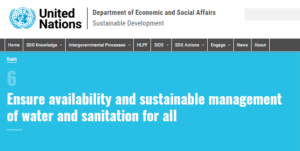Sustainable Lake Management Topic Page

Natural and artificial lakes store nearly 90% of all liquid surface fresh water on the planet and are vital to economies, societies and ecosystems worldwide. Yet, these ecosystems face increasing pressure from biodiversity loss, pollution and rising temperatures. Recognizing these threats, in March 2022, the United Nations Environment Assembly adopted a landmark resolution on Sustainable Lake Management (SLM). It calls on countries to protect, conserve, restore, and sustainably use lakes and reservoirs, while integrating them into national and regional development plans.
In this topic page you will find access to readings and contents on Sustainable Lake Management.
For an in-depth learning, we invite you to take our self-paced course. The course has been designed for lake or water practitioners at the middle management level who are responsible for the daily operations or management of lake or reservoir water resources.
- Embedding Lakes into the Global Sustainability Agenda: Link to the document
- Planning for Sustainable Lake Basin Management. report from ILEC (2023) Integrated Lake Basin Management Training Materials: Link to the document
UN Sustainable Development Goal 6 – See sections entitled “Overview”, “Targets” and “Targets 6.3, 6.4, 6.5 and 6.6”:
https://sdgs.un.org/goals/goal6#targets_and_indicatorshttps://sdgs.un.org/goals/goal6
UN Decade on Ecosystem Restoration Lakes portal – See section entitled “Resources on Lakes”
https://www.decadeonrestoration.org/healthy-and-productive-lakes
Messages
- Lakes and the ecosystem services they provide are under threat from the triple planetary crises (Climate change, biodiversity loss, and pollution and waste).
- The practice of Sustainable Lake Management is based on two approaches: Integrated Lake Basin Management (ILBM)) and International Principles and Standards for the Practice of Ecological Restoration.
- Conducting a comprehensive baseline status assessment of the lake is a critical first step in Sustainable Lake Management. This baseline assessment must account for existing environmental, social, economic, institutional, and policy-related factors.
- A Lake Brief can be used to conduct such a baseline assessment and identify pressures on and gaps in the system.
- Key components of a lake recovery plan include a defined vision, restoration targets, recover goals and reference model.
- Monitoring and evaluation are critical to tracking progress as part of a Lake Recovery Plan.
- Nature-Based Solutions (NBS) are particularly relevant to Sustainable Lake Management due to the multitude of benefits they are able to deliver to ecosystems and communities.
- Effective institutions, stakeholder engagement, and policies are important to the success of Sustainable Lake Management.
- Involving a wide stakeholder base must be done from the start of any lake recovery efforts and can help with project implementation and on-going maintenance.
- Sustainable Lake Management is a gradual, continuous, cyclic process, characterized by continuous monitoring and evaluation, with progress largely made in incremental steps.
- Successful lake management is challenging. The value of Sustainable Lake Management lies in providing insights into future courses of action that might be useful.

